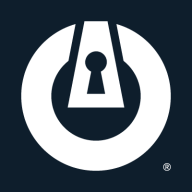

ThreatLocker Zero Trust Endpoint Protection Platform and SentinelOne Singularity Identity compete in the endpoint security category. ThreatLocker seems to have the upper hand with its comprehensive application management and direct customer support model.
Features: ThreatLocker Zero Trust Endpoint Protection Platform offers features like application control, ring-fencing, and storage control, allowing effective monitoring and restriction of endpoint activities. Users note its ability to minimize attack surfaces with stringent application governance. SentinelOne Singularity Identity utilizes AI-driven threat detection with behavior-based analysis, providing real-time threat intelligence and prevention for a strong security posture.
Room for Improvement: ThreatLocker could improve its training flexibility by adding after-hours options and refining the UI for easier navigation. The staggered rollout of updates needs optimization to prevent network saturation. SentinelOne would benefit from enhancements in endpoint management and introducing web filtering capabilities. Concerns about agent updates and setup processes also indicate a requirement for a more seamless user experience.
Ease of Deployment and Customer Service: ThreatLocker is commended for its diverse deployment options, on-premises and cloud, and real-time chat support enhancing customer satisfaction. SentinelOne's support lacks proactivity and would improve with more intuitive cloud deployment options. Though both ensure reliable security, ThreatLocker's customer engagement model is a notable strength.
Pricing and ROI: ThreatLocker is considered valuable for its security features, though perceived as expensive, it offers good ROI through security enhancements and management reductions. SentinelOne is seen as cost-effective, but rising costs relative to feature integration remain a concern. It delivers value with integrated security solutions, providing substantial ROI.
If something were to happen without ThreatLocker, the cost would be huge, and thus, having it is definitely worth it.
The main return on investment is peace of mind, knowing that with ThreatLocker on any endpoint, it will almost always block all malicious code or exploits, even zero-day exploits.
It keeps malware, Trojans, and ransomware at bay.
They have been responsive to our needs as integrators and those of the client.
They have been very responsive, helpful, and knowledgeable.
I would rate their customer support a ten out of ten.
Their support is world-class.
I started off with just the servers, and within a month and a half, I set up the entire company with ThreatLocker.
It seems to primarily operate on the endpoints rather than at a central location pushing out policies.
I would rate it a ten out of ten for scalability.
For five years, we have not had a problem.
Once deployed, it downloads the policies locally, so even if the computer doesn't have internet, it doesn't matter.
It has been very stable, reliable, and accessible.
There is a clear roadmap for improvements, including enhancing capabilities with AI and seamless functionality in an MSP model for deeper visibility across multiple agencies.
Controlling the cloud environment, not just endpoints, is crucial.
This is problematic when immediate attention is needed.
Comprehensive 24-hour log monitoring is a valuable enhancement for both business and enterprise-level users.
After conversations with other partners, it became clear we underpriced it initially, which caused most of our issues.
We are moving towards the Unified solution, where they basically bundle everything together, providing us better stability with the ability to bring in new product offerings without having to go back to the customer and say, 'This is going to cost you.'
I had a really good deal at the time, and it continues to be cost-effective.
With visibility into endpoint telemetry, SentinelOne does provide useful information to find threat actors and empowers those who are in the business of threat hunting.
ThreatLocker Zero Trust Endpoint Protection Platform's ability to block access to unauthorized applications has been excellent.
It protects our customers.
The major benefit is fewer breaches overall, as nothing can be run without prior approval. This helps my company protect its data and secure itself effectively.


Singularity Identity, a component of the Singularity platform, provides threat detection & response (ITDR) capabilities to defend Active Directory and domain-joined endpoints in real-time from adversaries aiming to gain persistent, elevated privilege and move covertly. Singularity Identity provides actionable, high-fidelity insight as attacks emerge from managed and unmanaged devices. It detects identity misuse and reconnaissance activity happening within endpoint processes targeting critical domain servers, service accounts, local credentials, local data, network data, and cloud data. On-agent cloaking and deception techniques slow the adversary down while providing situational awareness and halting adversarial attempts at lateral movement. Singularity Identity helps you detect and respond to identity-based attacks, providing early warning while misdirecting them away from production assets.
Singularity Identity’s primary use case is to protect credential data and disrupt identity-based attacks. The most valuable function of Singularity Identity is its ability to misdirect attackers by providing deceptive data to identity-based recon attacks. Additionally, it can hide and deny access to locally stored credentials or identity data on Active Directory domain controllers.
Singularity Identity also provides rapid detection and respond to identity attacks, capturing attack activity and feeding it directly to the Singularity platform’s Security DataLake for enterprise-wide analysis and response.
By implementing Singularity Identity, organizations benefit from enhanced security, reduced credential-related risks, and improved user productivity. It detects and responds to identity-based attacks, ensuring only authorized individuals can access critical identity data. With its cloaking capabilities to hide identity stored locally on endpoints or in the identity infrastructure and it’s ability to provide decoy results to identity-based attacks, organizations can effectively secure their sensitive or privileged identities, resulting in improved overall identity security.
ThreatLocker Zero Trust Endpoint Protection Platform offers robust endpoint security through application control and allowlisting, safeguarding servers and workstations from unauthorized software execution.
ThreatLocker Zero Trust Endpoint Protection Platform provides extensive application control with features like ring-fencing and selective elevation, ensuring meticulous execution management. Offering learning mode and extensive support, it integrates threat detection and activity monitoring to enhance compliance, reduce costs, and bolster cybersecurity through alerts and approvals. Despite its strengths, there are areas for improvement in training flexibility, policy updates, and interface enhancements, along with challenges in handling non-digitally signed software. Deployed across environments, it works well with existing cybersecurity instruments for real-time threat prevention.
What are the top features of ThreatLocker?ThreatLocker Zero Trust Endpoint Protection Platform is widely implemented to safeguard IT infrastructures against unauthorized access and application use. In sectors where data security is paramount, this platform enables users to prevent unauthorized software installations and control device applications, ensuring real-time threat prevention and compliance with industry regulations.
We monitor all Advanced Threat Protection (ATP) reviews to prevent fraudulent reviews and keep review quality high. We do not post reviews by company employees or direct competitors. We validate each review for authenticity via cross-reference with LinkedIn, and personal follow-up with the reviewer when necessary.